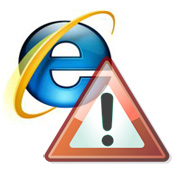Everything You Need to Know About !important CSS Declarations

!important declarations, and there was a little bit of confusion over what they actually did, and how they could be used, as expressed in the user comments on those articles.
So I thought I would research this unique CSS property/value appendage and do a comprehensive write-up on it that would go through essentially all the information developers should have before considering its use in their style sheets.
This article will discuss what !important is, how it’s used, some practical uses for it, and drawbacks that need to be considered before implementing it.

 Over the years there have been hundreds, if not thousands of articles published online that have each had a tremendous impact on the world of web development and design. Some have been truly memorable, and have remained quite relevant for years, and remain so today. Others have outlived their usefulness, but we remember them because of the impact they had on our code and on the way we think about web design.
Over the years there have been hundreds, if not thousands of articles published online that have each had a tremendous impact on the world of web development and design. Some have been truly memorable, and have remained quite relevant for years, and remain so today. Others have outlived their usefulness, but we remember them because of the impact they had on our code and on the way we think about web design. In a previous article I described
In a previous article I described